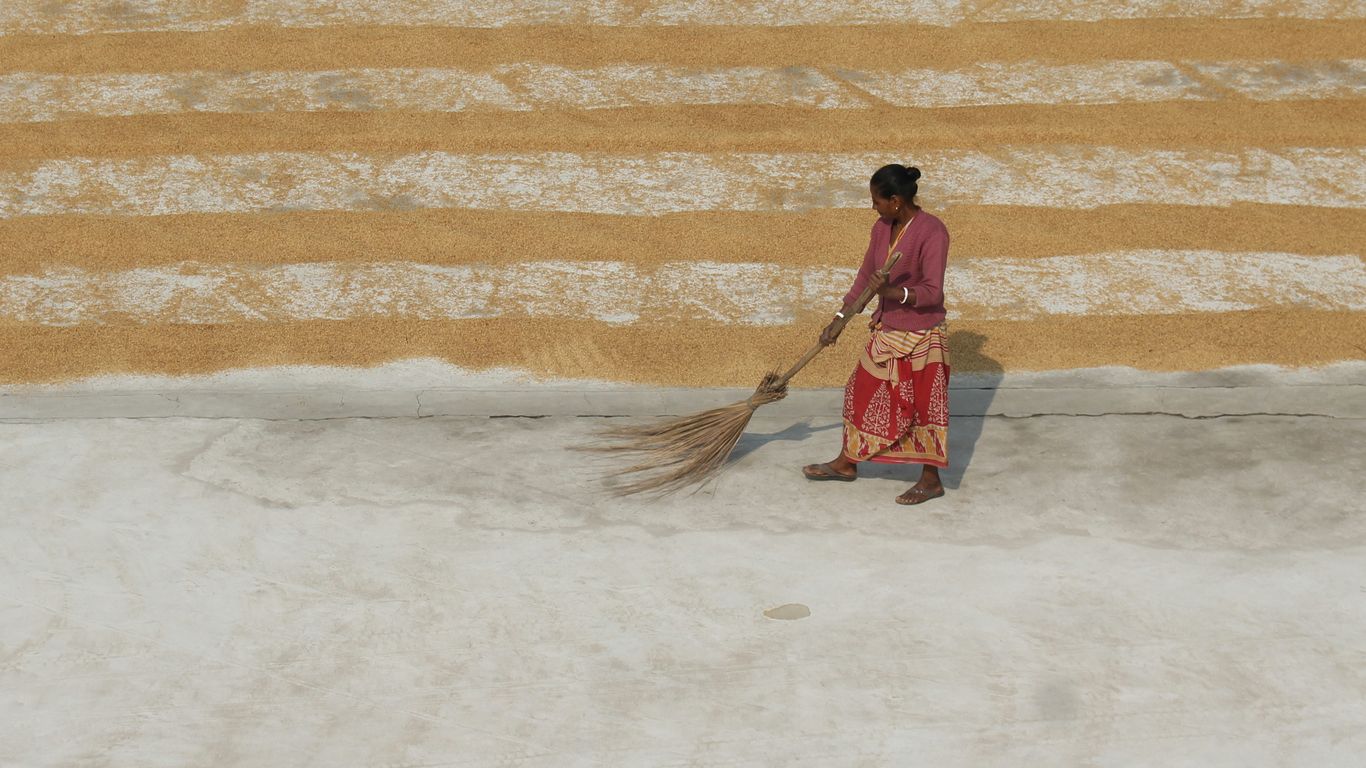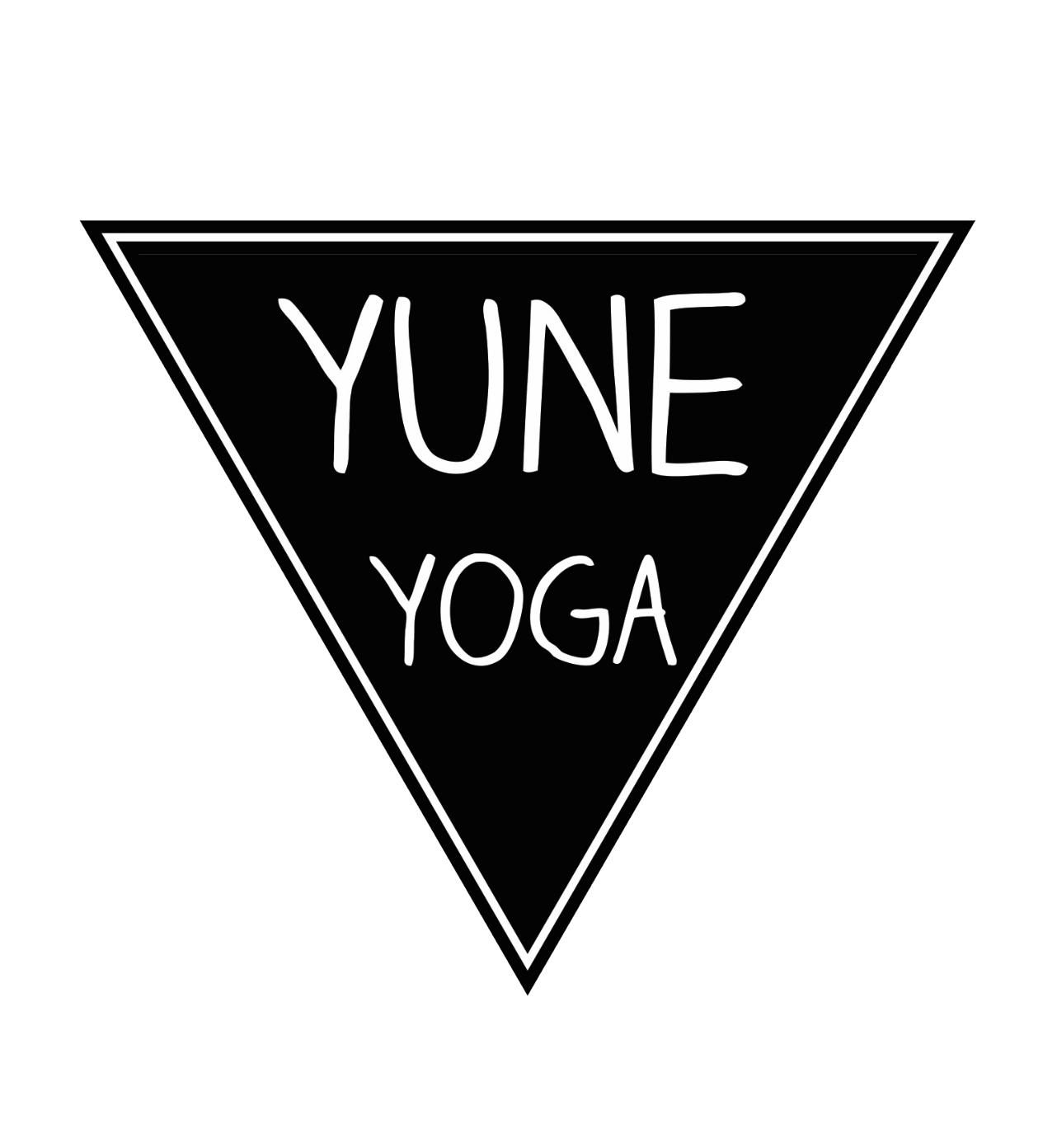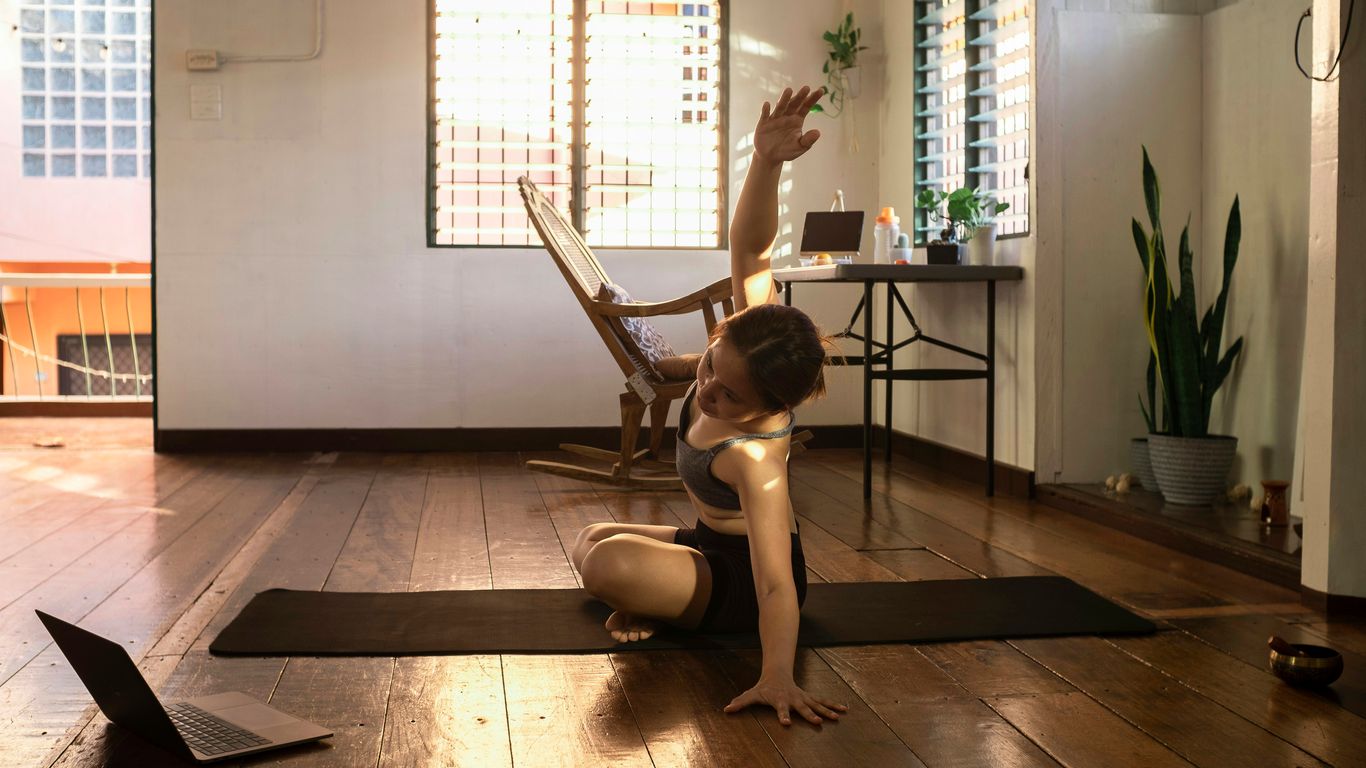
Mastering the Clean: Your Ultimate Guide on How to Clean a Manduka Yoga Mat
So, you've got a Manduka yoga mat and you're wondering how do you clean a Manduka yoga mat? It's a pretty solid investment for your practice, right? Keeping it clean isn't just about making it look nice; it actually helps it last longer and keeps things hygienic. Nobody wants to practice on a grubby mat, especially after a sweaty session. We'll walk you through the simple steps so you can get back to focusing on your poses, not the funk.
Key Takeaways
- Know your mat's material: Open-cell mats soak up moisture, while closed-cell mats don't. This affects how you clean them.
- Use gentle cleaners: Mild soap or a dedicated yoga mat cleaner works best. Avoid harsh chemicals.
- Clean it right: Mix a gentle solution, wipe down both sides, and rinse thoroughly to prevent slipperiness.
- Dry it completely: Absorb excess water with a towel and then air dry. Never store a damp mat.
- Regular upkeep matters: Quick wipes after practice, spot cleaning, and clean hands/feet keep your mat fresh between deep cleans.
Understanding Your Manduka Mat's Material
So, you've got a Manduka mat, which is awesome. But before you start scrubbing, it's super important to know what it's made of. This isn't just a random detail; it actually changes how you should clean it. Manduka uses different materials, and they fall into two main categories: open-cell and closed-cell construction. Knowing which one you have makes all the difference in keeping your mat in good shape.
Open-Cell vs. Closed-Cell Construction
Think of it like a sponge versus a plastic bag. Open-cell mats have tiny pores that can soak up moisture, kind of like a sponge. This is great for grip when you're sweating a lot, but it also means they can absorb sweat, dirt, and bacteria more easily. Closed-cell mats, on the other hand, have a surface that doesn't let moisture in. They're more like a plastic bag – water just beads up on top. This makes them easier to keep clean on the surface, but they might get a bit slippery if you sweat a lot.
- Open-Cell: Absorbs moisture, sweat, and bacteria. Needs more frequent deep cleaning. Great for sweaty practices. Examples include some natural rubber mats.
- Closed-Cell: Repels moisture. Easier to wipe down. Less likely to harbor bacteria deep within. Most PVC mats and some natural rubber mats fall into this category.
Why Material Matters for Cleaning
This is where it gets practical. If you have an open-cell mat, you'll want to be a bit more careful about how you clean it. Because it absorbs things, you need to make sure you're getting all the grime out and drying it properly so it doesn't get funky. A mat that absorbs sweat might need a good wipe-down with a specific cleaner after each use, like Manduka's Natural Rubber Yoga Mat Restore, to keep it fresh. Closed-cell mats are generally more forgiving; a quick wipe is often enough. However, if you have a closed-cell mat and sweat a lot, you might find it gets slippery, and you'll want to use a yoga mat towel to help manage moisture and improve grip.
The construction of your mat dictates its interaction with moisture and microbes. Understanding this basic difference is the first step to a clean and long-lasting yoga companion.
Gathering Your Essential Cleaning Supplies
Before you can get your Manduka mat sparkling clean, you'll need to round up a few things. It's not complicated, honestly. You probably have most of this stuff already, or it's easy to find.
Choosing the Right Cleanser
When it comes to cleaning your mat, you don't need anything fancy. A mild dish soap works just fine. Just a little bit, mixed with water, is usually enough to break down the sweat and grime that builds up. Alternatively, you can get a cleaner specifically made for yoga mats. Manduka even makes their own, which is a good bet since it's designed for their mats. The key is to go gentle; harsh chemicals can really damage the mat's surface over time.
The Role of Essential Oils
Adding a few drops of essential oil to your cleaning mix isn't just for a nice smell, though that's a bonus. Some oils, like tea tree or lavender, have natural properties that can help keep things fresh and fight off any funk. It's like a little extra boost for your mat's hygiene. Just be careful not to go overboard – a little goes a long way, and you don't want your mat to be too slippery.
Soft Cloths and Drying Towels
For washing, a soft cloth or a sponge is your best friend. You want something that will gently lift dirt without scratching the mat. Think microfiber or a soft cotton cloth. Then, for drying, you'll want a clean, absorbent towel. A regular bath towel works well. The goal is to get as much moisture off as possible before letting it air dry completely.
The Step-by-Step Guide to Cleaning Your Mat
Okay, so you've got your Manduka mat, and it's seen some action. Time to give it a good clean! It's not complicated, really. Just follow these steps, and your mat will feel fresh and ready for your next session.
Creating Your Gentle Cleaning Solution
First things first, let's mix up a cleaning potion. You don't need anything fancy. Grab a spray bottle. A mild dish soap or a cleaner made specifically for yoga mats works great. If you like a nice smell and want some extra cleaning power, add a few drops of your favorite essential oil – tea tree or lavender are good choices. Then, fill the rest of the bottle with warm water. Give it a good shake to mix everything up. This simple solution will lift dirt without harming your mat.
Washing Away Dirt and Grime
Now, take your mat and lay it flat. Spray your cleaning solution all over the surface. Don't drench it, just a nice even coat. Grab a soft cloth or a sponge – nothing too rough, we don't want to scratch the mat. Gently wipe down the entire mat. Pay a little extra attention to any spots that look a bit grubby. Work in small sections, making sure you cover everything.
Rinsing for a Residue-Free Surface
After you've wiped it down, it's time to rinse. Grab a clean cloth and dampen it with plain water. Wipe down the mat again, just like you did with the cleaning solution. The goal here is to get rid of any soap or oil residue. If you leave too much behind, the mat can get slippery, and nobody wants that during a downward dog. Keep wiping until you feel like all the suds are gone.
Ensuring Proper Drying and Storage

Absorbing Excess Moisture
After you've given your Manduka mat a good wash, the next big step is getting it dry. Don't just leave it there dripping! You want to get as much water out as possible right away. A good way to do this is to lay your mat flat on a clean, dry towel. Then, gently roll the mat up inside the towel. Press down a bit as you roll to help the towel soak up all that extra moisture. Think of it like wringing out a sponge, but much gentler on your mat.
Air Drying for Optimal Results
Once you've absorbed the bulk of the water, it's time for air drying. The goal here is to let your mat dry completely before you even think about rolling it up. You can hang it over a drying rack, or lay it flat again on a clean, dry surface. If you can do this outside on a nice day, even better! Just keep it out of direct, harsh sunlight, as that can actually damage the mat over time. Give it at least a few hours, or until you're absolutely sure it's dry all the way through. A damp mat can quickly become a breeding ground for mold and mildew, and nobody wants that.
Storing Your Mat Correctly
Proper storage is key to keeping your Manduka mat in good shape for a long time. When it's not in use, always roll it up. Never fold it, unless you're traveling and absolutely have to. Folding can create creases that are hard to get out and can weaken the material. Find a cool, dry spot for your rolled-up mat. A yoga bag is a great option because it protects it from dust and light. Avoid leaving it in a hot car or anywhere with a lot of moisture. A dark, dry place is your mat's best friend.
Here's a quick rundown:
- Roll, don't fold: This preserves the mat's integrity.
- Cool and dry: Find a spot away from heat and humidity.
- Protect it: A yoga bag helps keep dust and light away.
- Check for dryness: Always store a completely dry mat.
Maintaining Your Mat Between Deep Cleans

So, you've done the big clean, and your Manduka mat is sparkling. Awesome! But what about keeping it that way between those more involved washing sessions? It’s actually pretty simple, and honestly, it makes a huge difference. Think of it like brushing your teeth – you still gotta do it daily, right? Keeping up with a few small things means your mat stays fresh and ready for your next flow, and you avoid that gross, sweaty buildup.
Quick Wipes After Each Session
This is probably the most important habit to get into. After every single practice, especially if you sweat a lot, give your mat a quick wipe-down. You don't need a whole production. Just grab a soft cloth, maybe slightly damp, and go over the surface. This simple step prevents sweat and oils from really setting in. It’s way easier to wipe away fresh moisture than to scrub at something that’s been baked on for days. If you're at a studio, you can use a yoga mat spray or even a gentle baby wipe in a pinch, just make sure it's not too wet.
Spot Cleaning Stubborn Marks
Sometimes, despite your best efforts, a little something extra might land on your mat. Maybe a bit of mud from your shoes, or a smudge from your water bottle. For these, you'll want to do a quick spot clean. Mix a tiny bit of mild soap with water, or use a dedicated mat cleaner. Dab it onto the spot with a cloth, gently rub, and then wipe with a clean, damp cloth to remove any residue. Don't go crazy with the liquid; you just want to tackle the specific area.
The Importance of Clean Hands and Feet
This one’s a bit of a no-brainer, but it’s worth mentioning. Before you even step onto your mat, make sure your hands and feet are clean. Think about it: throughout the day, our hands and feet pick up all sorts of dirt, grime, and lotions. All of that transfers directly onto your mat. A quick wash with soap and water before you start your practice can significantly cut down on the amount of gunk that ends up on your mat, meaning less cleaning for you later on. It’s a win-win, really.
What to Avoid When Cleaning Your Mat
So, you've got your Manduka mat, and you're ready to give it a good scrub. That's awesome! But before you go all out with the cleaning supplies, let's talk about what not to do. Messing this up can actually damage your mat, making it less grippy or even causing it to break down faster. It’s all about being gentle and using the right stuff.
Harsh Chemicals and Abrasives
Think about it: your mat is what you're pressing your skin against for your entire practice. You don't want any nasty chemical residue left behind, right? Stuff like bleach, strong detergents, or anything with a really strong scent can break down the mat's material over time. Plus, it can irritate your skin. Even things like scouring pads or rough sponges are a no-go. They can scratch up the surface, making it look worn and affecting its grip.
Excessive Water and Soaking
Manduka mats, especially the open-cell ones, are designed to absorb sweat. That's great for grip, but it also means they can soak up too much water if you're not careful. Never, ever toss your mat in the washing machine or try to soak it in a bathtub. Too much water can get trapped inside the mat's layers, which is a breeding ground for mold and mildew. It can also weaken the mat's structure. You just need enough moisture to clean the surface, not to drown it.
Prolonged Direct Sunlight Exposure
Sunlight is great for drying things out, but too much of a good thing can be bad. Leaving your mat out in direct, harsh sunlight for extended periods can cause the material to fade, become brittle, and lose its flexibility. Think of it like leaving a plastic toy out in the sun all summer – it gets all warped and sad. So, while a little bit of indirect light while it air dries is fine, avoid baking it on a sunny windowsill for hours on end.
Keep Your Mat Fresh, Keep Your Practice Flowing
So there you have it. Cleaning your Manduka mat doesn't have to be a big chore. A little bit of regular attention, using the right stuff, and making sure it dries properly will go a long way. Think of it as part of your practice, really. A clean mat means a cleaner space for your mind to settle, and honestly, it just feels better to step onto something that doesn't smell like last week's workout. Keep up with these simple steps, and your mat will be there for you, supporting every downward dog and warrior pose for years to come. Happy cleaning!
Frequently Asked Questions
How often should I clean my yoga mat?
It's a good idea to give your yoga mat a quick wipe down after every time you use it. This helps get rid of sweat and dirt before it can build up. For a deeper clean, aim to wash it thoroughly about once a week, or more often if you practice hot yoga or tend to sweat a lot.
What's the best way to make a cleaning solution for my mat?
For a simple and effective cleaner, mix some warm water with a tiny bit of mild dish soap or a cleaner made specifically for yoga mats. You can also add a few drops of your favorite essential oil, like lavender or tea tree, to help it smell nice and fight germs. Just shake it up in a spray bottle!
Can I use harsh chemicals to clean my mat?
No, definitely not! Strong cleaners, bleach, or anything abrasive can damage the material of your mat, making it wear out faster. They can also leave behind yucky stuff that might irritate your skin. Stick to gentle, natural cleaners.
How do I dry my yoga mat properly?
After washing, gently pat your mat with a clean towel to soak up extra water. Then, let it air dry completely. You can lay it flat or hang it over a drying rack. Make sure it's totally dry before you roll it up to prevent mold or mildew.
What should I do if I have a stubborn spot on my mat?
For tough spots, you can try making a paste with a little baking soda and water. Gently rub it onto the spot with a soft cloth, then wipe it clean. Always rinse the area well afterward to make sure all the baking soda is gone.
How should I store my yoga mat when I'm not using it?
It's best to store your mat rolled up, not folded, in a cool, dry place. A yoga mat bag can offer extra protection. Avoid leaving it in direct sunlight for long periods, as this can cause the material to break down over time.

